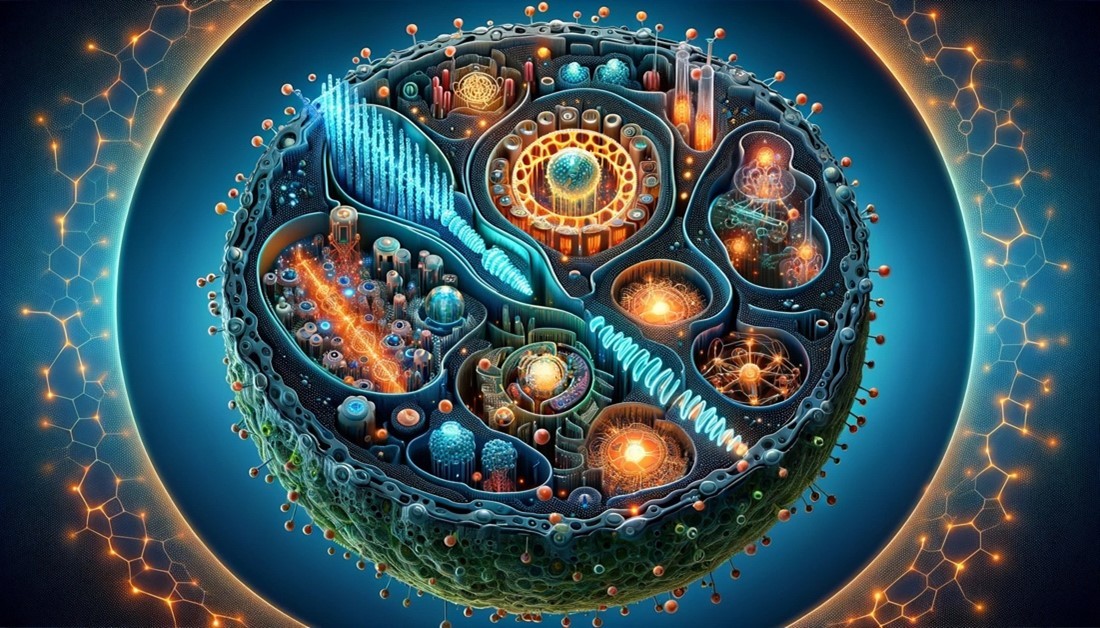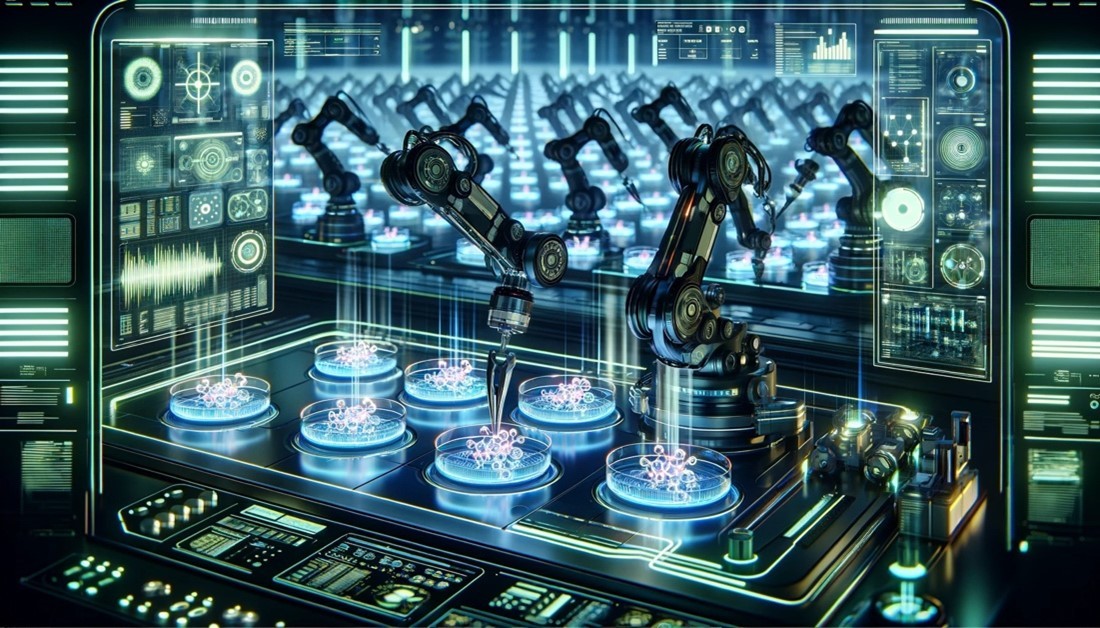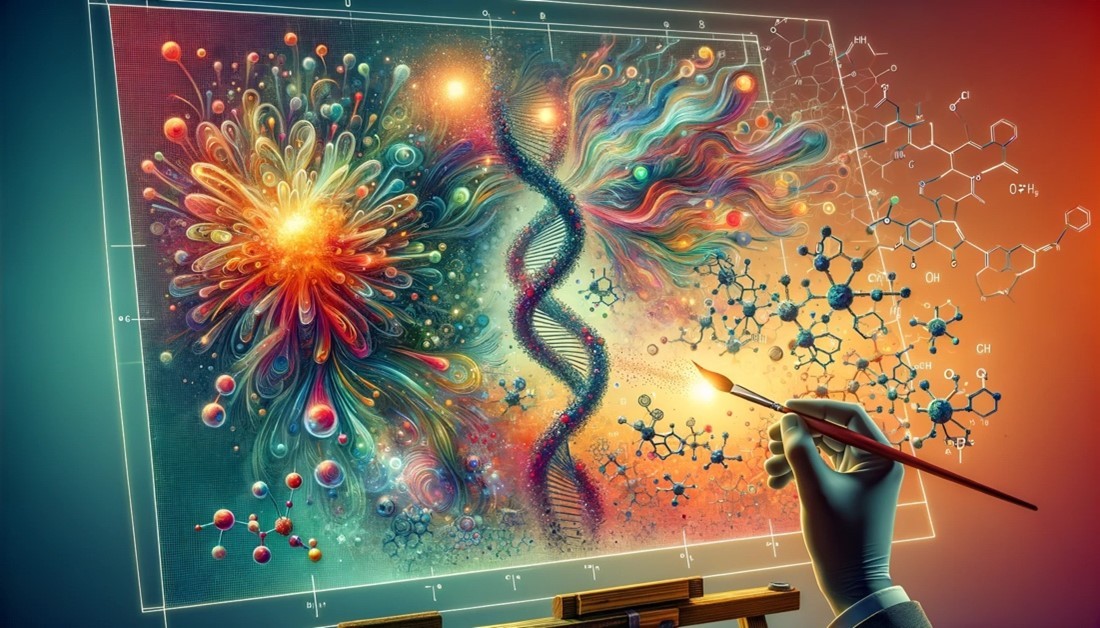Synthetic Biology + Artificial Intelligence = Next Generation Therapeutics
Artificial intelligence is bridging the gap between synthetic biology and medicine - Meet the innovative companies leading the way
Mar 12, 2024
[DALL-E]
As the annual SynBioBeta event approaches, the industry is grappling with fewer funding opportunities and shorter runways—leading innovators to focus their efforts on the most robust of industries: healthcare. With the pharmaceutical industry grappling with high failure rates and a surplus of "me-too" drugs, the integration of Artificial Intelligence (AI) into synthetic biology processes offers promising solutions. From AI-driven protein engineering to the exploration of nature's molecular diversity, this convergence signals a transformative shift in drug development towards more efficient and diverse therapeutics.
Synthetic Biology Meets Biopharma
Those who attend the annual SynBioBeta event regularly have probably noticed an interesting trend. The cool, edgy science companies repping vegan leathers and edgy plastics are increasingly joining with more and more grey suits from pharma.
Synthetic biology is interdisciplinary by nature, so this begs the question – Why is the NIH suddenly paying more attention to an industry historically funded by the DOD and DOE? And what role will synthetic biology play in the development of future medicines?

For anyone who hasn’t been drinking the Kool-Aid, Synthetic biology applies engineering principles to biology, primarily through Design, Build, Test, Learn, (DBTL) cycles. In other words, tinkering.
By contrast, the drug development process is not built for tinkering. It’s slow, regulated, and risky. Only the most promising (likely to be effective) and low-risk (likely to be safe) candidates advance to clinical trials. The trouble is, we’re really terrible at picking candidates.
Literally 90% of drug candidates fail clinical trials. What’s more, the majority of approved drugs are so-called “me-to” drugs that do not have a unique mechanism of action. In short, the risk of bringing a truly novel drug to market selects for more of the same.
Adding in AI
Fortunately, synthetic biologists are all about novel. Before AI was trendy, synthetic biologists leveraged machine learning in the L cycle – feeding algorithms massive amounts of data from experiments testing hundreds or thousands of genetic or biochemical alterations.
Increasingly, AI is revolutionizing the design, build, and test phases as well. AI expands the design space by not only predicting how incremental changes to a protein’s structure will impact its function (and toxicity) but also constructing entirely novel protein designs.
The test phase—historically out of reach for biopharma due to the expense of testing even a single candidate—is now being explored in vitro and in silico in ways and at scales not previously possible without AI.
AI also has a role in the build phase, automating benchtop work and QC so that more iterations of potentially therapeutic molecules can be generated for automated in vitro testing.

Several emerging therapeutics and tools companies are revolutionizing one or more phases of the traditional synthetic biology cycle with AI. The result is vastly more novel drug candidates, more thoroughly and cheaply vetted. It will take time to determine the clinical impact, and whether these candidates truly decrease the clinical trial failure rate, but the archetype of candidates poised for Phase I is already shifting and expanding.
Emerging Therapeutics Companies Leading the Way
Artificial Intelligence has a rich history in protein engineering. Academic and commercial scientists have used AI for years to predict the form and function of protein variants. The addition of synthetic biology generates more novel protein-based therapeutics and accelerates pre-clinical testing.
For instance, GRO Biosciences goes a step beyond standard protein engineering by introducing non-standard amino acids. Their current pipeline is focused on resolving protein structural instability and neutralizing autoimmune reactions by reprogramming cell surface proteins.
Absci and Generate Biomedicines are also moving beyond the canonical. Absci’s pipeline of completely novel antibodies is currently focused on inflammatory bowel disease, dermatology, and immune-oncology applications. In addition to antibodies, Generate Biomedicines is designing de novo enzymes and so-called stealth proteins that minimize the risk of autoimmune response. Generate currently has two targets in Phase I trials.

One challenge for biologic therapies is the need to administer by injection or infusion. Emerging company Insamo addresses this problem by focusing its AI-driven DBTL cycles on membrane-permeable and orally available cyclic peptides.
Sometimes, a protein is not the solution but the problem. Arvinas, with their revolutionary PROTAC® platform, is leveraging AI to design synthetic molecules that combine a novel or canonical ligase with a protein-targeting region. The resulting chimeric molecule can target problematic proteins for degradation using the body’s protein destruction (ubiquitin-proteasome) system. Their candidate for ER+/HER2- Breast Cancer has already advanced to Phase 3.
Proteins are not the only game in town. Atomwise and Exscientia have both developed AI-based platforms for small-molecule drug candidates. Atomwise is focused on targets seen as undruggable, and they’ve addressed over 600 unique targets. Exscientia is designing completely novel drugs with multiple properties (potency, selectivity, stability, toxicity, etc) considered in parallel. An ongoing clinical trial for a CDK7 exemplifies Excsientia’s early success.
Pretherapeutic Tools and Technologies to Watch
In addition to those with their own pipeline now, there are many companies leveraging AI and synthetic biology for tools and technologies that are likely to ultimately produce novel candidates for them or their commercial partners. For instance, CDD Vault has built a data management and analysis engine that is therapy agnostic—with applications in protein therapeutics, CRISPR, PROTACs, Antibody-drug conjugates, and combination therapies for oncology.
In the area of cell-based treatments, CellVoyant, an early-stage company backed by Exscientia, is commercializing an AI-based live cell imaging platform designed to predict and optimize stem cell differentiation. Asimov, meanwhile, has created a platform that integrates engineered cells, genes, computer-aided design and simulation, multiomics analysis, and QC to advance the design of RNA, gene, and cell therapies. In an out-of-the-box approach to nucleic acid-based therapies, Alltrna (pronounced “all-turn-uh”) is focusing on tRNA as a vehicle for addressing genetic diseases resulting from premature stop codons.

Though historically developed via natural processes or display libraries, Antibodies have also benefited from the AI revolution. Bioloomics employs AI, directed evolution, and robotics to guide the screening of target-degrading antibodies that traffic to specific organelles. On a similar front, BigHat Biosciences is using machine learning and high throughput biology (HTB) to guide the design of therapeutic antibodies. LabGenius goes a step further with robotics platforms capable of autonomous experimentation through the whole DBTL cycle in cell-based assays to find high-performing antibodies.
AI-based protein design has been a hallmark of synthetic biology for years, but several emerging companies are considering novel approaches. For instance, Profluent uses the same large language models employed by chatbots to design and optimize proteins. To evaluate massive numbers of protein sequence combinations in silico, Arzeda leverages physics-based computational design and AI, while Dreamfold uses generative algorithms to design drugs that precisely match the shape of their molecular targets. Taking a broader approach, VantAI is building a discovery platform rooted in structural proteomics and proximity biology to make protein interactions programmable.
Even as pioneers seek to custom-build molecules traditionally designed by nature, however, nature remains a valuable repository of useful biomolecules. Multiple firms are unleashing AI on humanity’s oldest method for molecular discovery: theft by finding. Mining fungal genomic data to uncover protein-inhibiting metabolites, Hexagon Bio is searching for small molecules relevant to human disease. For enzyme engineering powered by AI, bitBiome taps into its extensive microbial genome database, while Enveda uses machine learning, metabolomics, and robotics to rapidly query chemical structure, biological activity, and organ distribution in nature’s untapped chemical space.
Looking Forward
The marriage of synthetic biology and Artificial Intelligence (AI) is forging a path towards a new era of biopharmaceutical innovation. The juxtaposition of edgy startups and traditional pharmaceutical companies at events like SynBioBeta underscores the growing significance of synthetic biology in the mainstream.
As the pharmaceutical industry increasingly turns its attention to this field, it prompts reflection on the transformative potential of synthetic biology in drug development. With its emphasis on tinkering and iterative processes, synthetic biology provides a fertile ground for AI integration, promising to accelerate experimentation, expand the design space for novel therapeutics, and mitigate the inherent risks of drug development.
Through the pioneering efforts of emerging therapeutics and tools companies, we are witnessing a paradigm shift toward creating more diverse, efficient, and effective medicines. As we navigate this exciting frontier, the collaboration between synthetic biology and AI offers a glimpse into a future where innovative solutions to complex medical challenges are within reach, heralding a new era of healthcare.



















